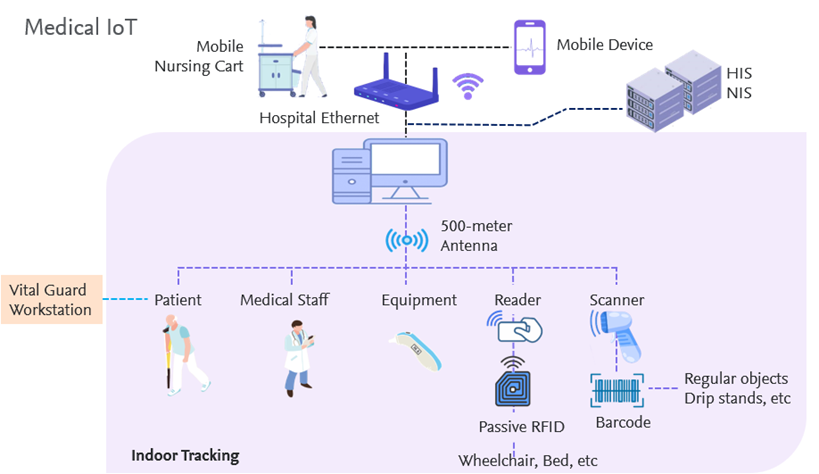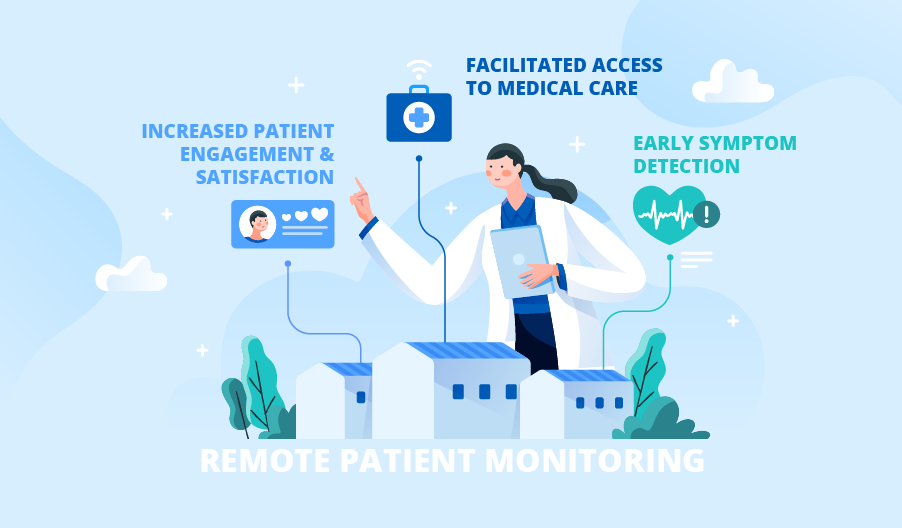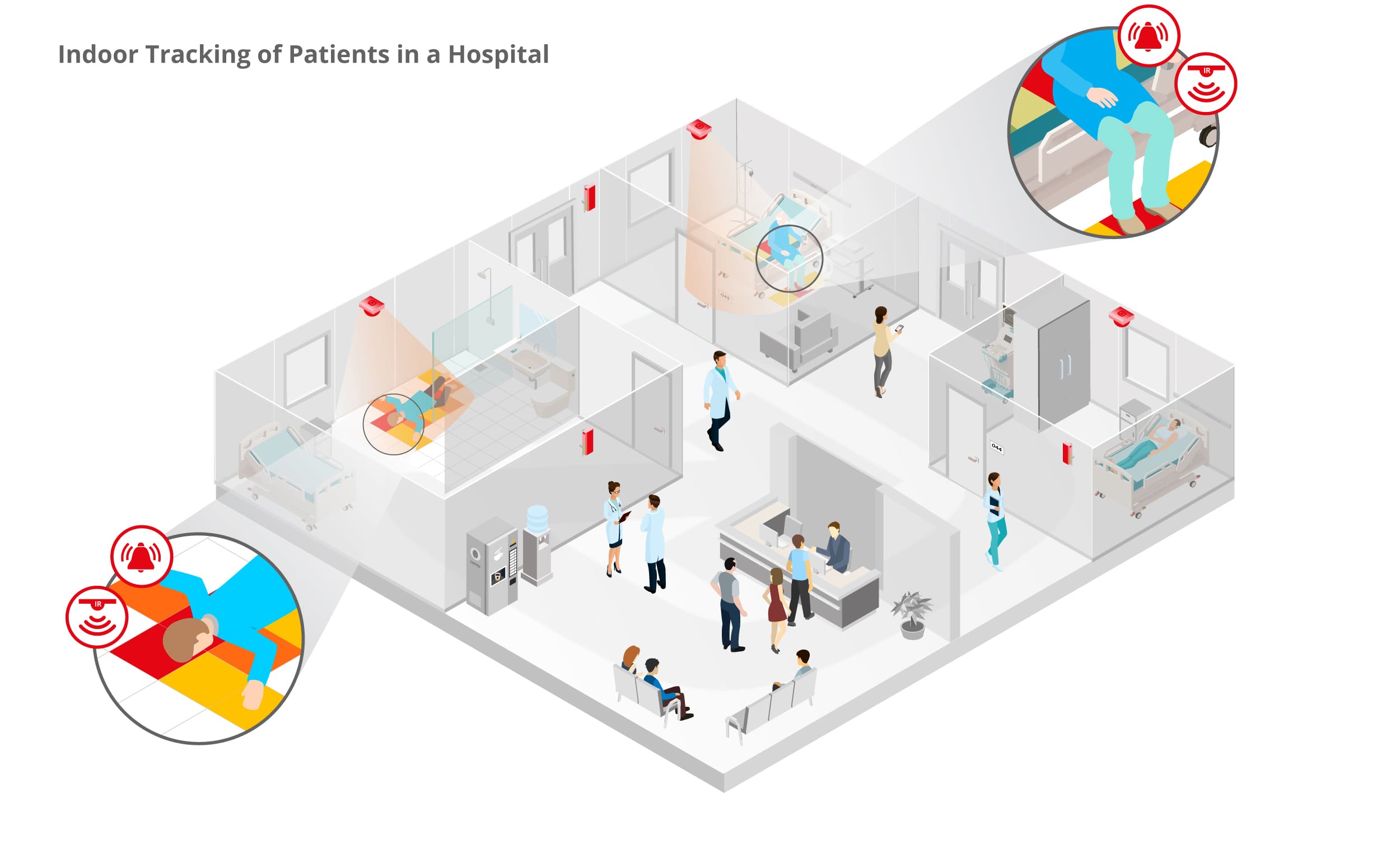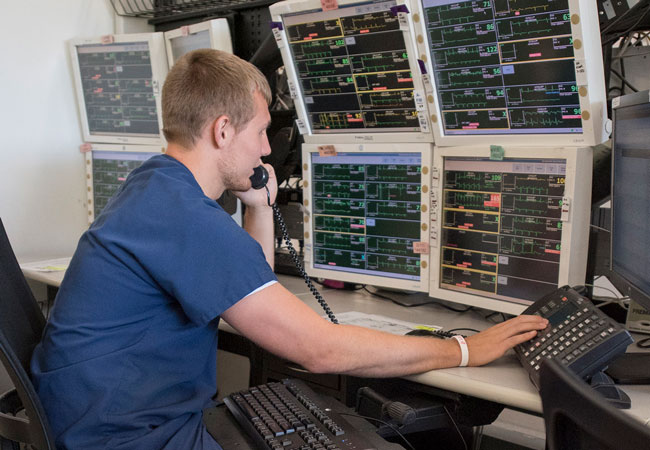

HR2000 system can integrate every aspect in the healthcare process. From patients' vital sign, various monitoring or examination data to an EHR system, it even able to manage properties and employees through the special RFID tag. By connecting all this information, the HR2000 system is able to form a Medical IoT to improve patient safety, reduce working redundant and implement machine learning for a better work flow.

The remote patient monitoring system allows patients no longer needed to be fixed on their bed. This benefit makes patients have better quality in hospitalized and be able to have early rehabilitation, which can decrease the recovery time and have better outcomes. Furthermore, by using the RPM system in the patient's place, hospitals can detect early symptom of diseases before the patient notice.

HR2000 system carried a real-time location system to locate each individual person, device and equipment in the facility. The location parameter can be used to find lost equipments or support patient unexpected events in no time. In addition, by learning the interaction of different objects through time and space, hospitals can consistently optimize the care plan and management strategies.

Telemetry system is proven can be beneficial to more than 70% of the hospitality patients since 2004[1]. Along with the idea of combining up-to-date rapid response team concept, Central Monitoring System generally became mainstream. In 2016, Cleveland Clinic was taken as a role model for this caring strategy[2]. And now, CMS has been proved can be helpful for not only rescue rate but treatment plan.
